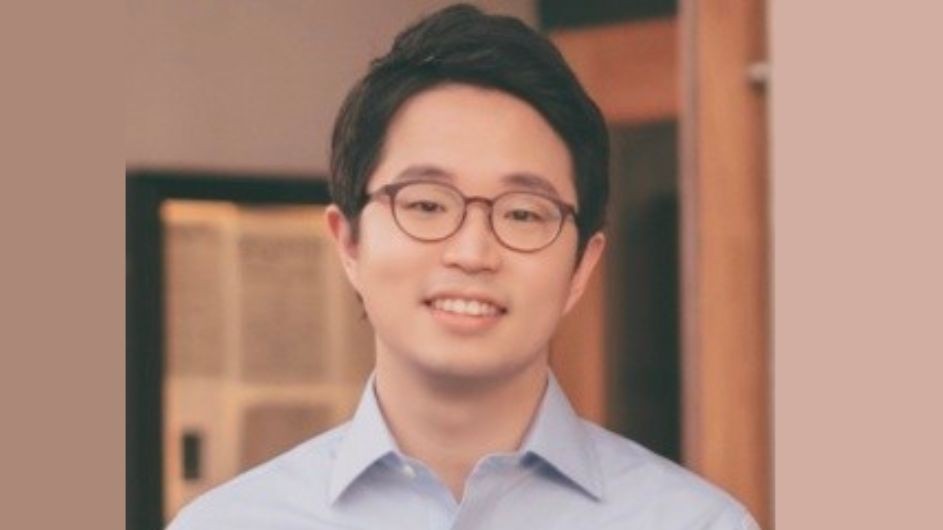Mix-and-Match Quantum Science
Columbia postdoc Brian Kim combines engineering and physics to advance research into the atom-thin world of 2D materials.

Brian Kim was born just outside New York City but moved to Korea with his parents when he was four. Over two decades later, he came back to New York again in 2018 to join Columbia as a postdoctoral fellow.
Kim has spent the past five years moving between the labs of mechanical engineer Jim Hone and physicist Dmitri Basov, with whom he’s honed his technical skills building devices out of atomically thin 2D materials and learned how to manipulate their unique quantum properties.
In December, he’ll be moving west with his own family—including his baby boy, who’s spent his first few months in New York too—to start a position as an assistant professor at the University of Arizona.
As he wraps up his time at Columbia, Kim shared some thoughts on his experiences here and recapped his work, including his latest paper in Nature Materials.
How did you end up back in New York?
I came back to the US from Korea to study at Northwestern University. I didn’t know exactly what I wanted to be, but I knew I wanted to do research. I did my PhD in electrical engineering at Stanford, where I learned how to synthesize heterostructures and devices made of oxides. These are oxygen-containing materials that display exciting quantum properties, which can be tailored at an atomic scale by synthesizing various atomic oxides in a layer-by-layer fashion.
I had a vision of combining oxides with 2D materials, an area where Columbia has a ton of expertise, and I was lucky to get a position working with Jim and Dmitri.
What’s it like moving between an engineering lab and a physics lab?
The goals can be different—applications versus more fundamental science—but we share the same ground. My career so far has been very interdisciplinary. Columbia is, too, which I really like. My degrees are in electrical engineering but I worked in a physics lab, so I have a mix-and-match of experience in device fabrication and measurements that I’ve been able to continue here with Jim, while really learning how to manipulate and control different 2D materials with Dmitri.
Tell us about your latest paper.
In March, we published a really meaningful paper for me in Nature Materials. I led the project, and it connected the dots between my PhD and my postdoctoral work. Basically, we combined graphene with another 2D material that we turned into an oxide with UV light and ozone. Depending on the material we oxidized, we could either add or remove electrons from the graphene—a process called ambipolar charge transfer.
Because we can easily control the density and the polarity of electrons, we now have a new tool to create and study quasiparticles called plasmons. Plasmons are oscillations of electrons that are confined to two dimensions. They are a form of light-matter interaction that may be useful in devices like quantum computers or sensors.
It’s amazing and fascinating that we can control these materials at an atomic level to create the properties that we want.
What are you thinking about next?
My own long-term vision is to combine 2D materials and oxides into novel plasmonic and photonic devices. I learned a lot at Columbia about how to manipulate and control different quantum materials, so I think I’m well prepared to do that as I start my career as a professor.
I was a postdoc for five years, which feels like a long time. But it’s important to remember that time isn’t important—if you are heading in the right direction, keep following your passion.
What’s left for you to finish up at Columbia?
There’s one project I’ve been working on since day one here: building an ultra-high vacuum 2D stacking system. This is a one-of-a-kind system that will allow us to stack 2D materials in a vacuum, which will help resolve some of the challenges that quantum materials researchers face. Namely, that these devices can be “dirty:” when multiple layers of 2D materials are stacked together, particles can get stuck in between and form bubbles that can obscure your desired properties. By stacking the layers in a vacuum, we hope to create cleaner interfaces across a larger area. It will also let us work with materials that are air-sensitive.
I designed the system, ordered the parts needed, and assembled it all from scratch (with many helping hands from my colleagues, of course!), which took a lot of time and effort. I’m finally almost there to get the first results out of this system, and I hope to finish it up before I leave.
What keeps you going outside of the lab?
My baby! He’s my major hobby outside of the lab—right now, we are working on naps.
It may sound like a cliché, but my baby is a huge motivation to pursue research in the hopes of making a better world for his future, which I hadn’t really thought deeply about before he was born.
Raising a baby definitely takes a huge commitment in terms of time and energy but at the same time, it gives me that extra kick to focus on my work. He’s helped me become extra focused during regular work hours and build a healthy routine of going to bed earlier and waking up very early.
